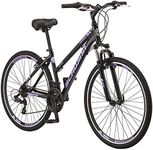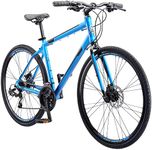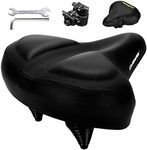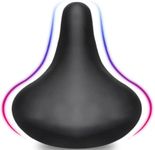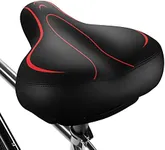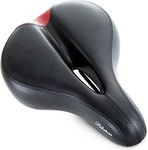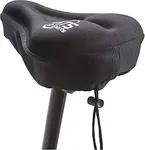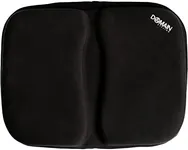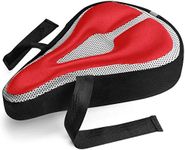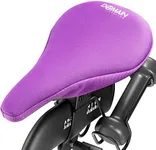Buying Guide for the Best Comfort Bikes
Comfort bikes are designed for casual riding, offering a smooth and enjoyable experience. They are perfect for leisurely rides around the neighborhood, commuting, or light trail use. When choosing a comfort bike, it's important to consider several key specifications to ensure you get the best fit for your needs. Here are the main specs to look at and how to navigate them.Frame MaterialThe frame material of a bike affects its weight, durability, and ride quality. Common materials include aluminum, steel, and carbon fiber. Aluminum frames are lightweight and resistant to rust, making them a popular choice for comfort bikes. Steel frames are heavier but offer a smoother ride due to their flexibility. Carbon fiber frames are the lightest and provide excellent shock absorption but are more expensive. Choose a frame material based on your preference for weight, ride quality, and budget.
SuspensionSuspension systems on comfort bikes help absorb shocks from bumps and rough terrain, providing a smoother ride. There are two main types: front suspension (suspension fork) and full suspension (front and rear). Front suspension is common in comfort bikes and is sufficient for most casual rides. Full suspension offers more comfort but adds weight and complexity. If you plan to ride on rougher paths or trails, consider a bike with front suspension. For mostly paved or smooth surfaces, a bike without suspension or with minimal suspension will suffice.
Wheel SizeWheel size affects the bike's stability, speed, and comfort. Common wheel sizes for comfort bikes are 26-inch and 700c. 26-inch wheels are smaller, providing better maneuverability and a lower standover height, which is great for shorter riders. 700c wheels are larger, offering a smoother ride and better efficiency on paved surfaces. Choose a wheel size based on your height and the type of terrain you'll be riding on.
GearingGearing determines how easy it is to pedal the bike on different terrains. Comfort bikes typically have a range of gears to help you tackle hills and flat surfaces. Bikes with more gears (e.g., 21-speed) offer greater versatility and make it easier to ride on varied terrain. However, if you plan to ride mostly on flat surfaces, a bike with fewer gears (e.g., 7-speed) will be simpler to use and maintain. Consider your riding environment and choose a gearing system that matches your needs.
BrakesBrakes are crucial for safety and control. The two main types are rim brakes and disc brakes. Rim brakes are lighter and easier to maintain, making them suitable for casual riding on paved surfaces. Disc brakes offer better stopping power, especially in wet conditions, and are more durable, making them ideal for varied terrain and heavier riders. Choose the brake type based on your riding conditions and preference for maintenance.
SaddleThe saddle, or seat, greatly affects your comfort during rides. Comfort bikes typically have wider, more cushioned saddles to provide better support and reduce pressure on your sit bones. Some saddles also have springs or gel padding for added comfort. When choosing a saddle, consider your riding duration and personal comfort preferences. Test different saddles if possible to find one that feels right for you.
HandlebarsHandlebars influence your riding posture and comfort. Comfort bikes usually feature upright handlebars that allow for a more relaxed, upright riding position, reducing strain on your back and shoulders. Some bikes have adjustable handlebars, letting you customize the height and angle for optimal comfort. Choose handlebars that promote a comfortable riding posture and consider adjustability if you want to fine-tune your riding position.

